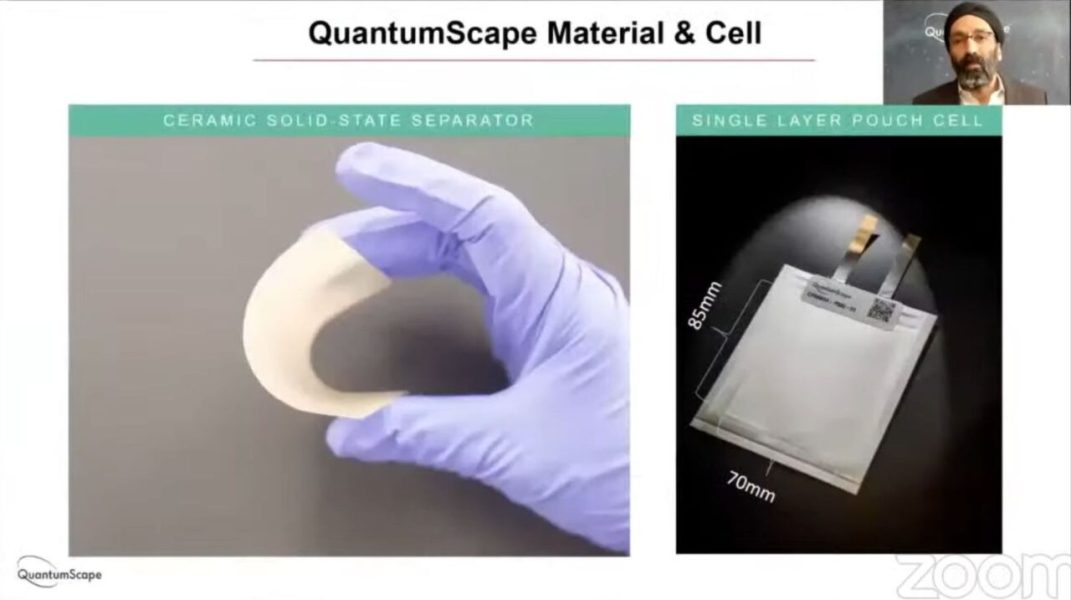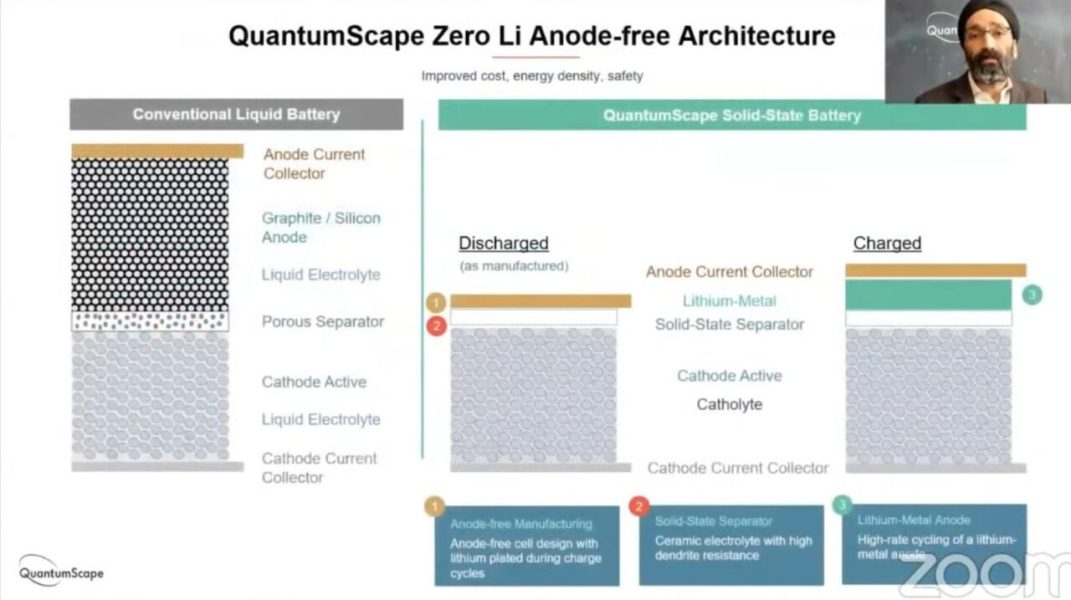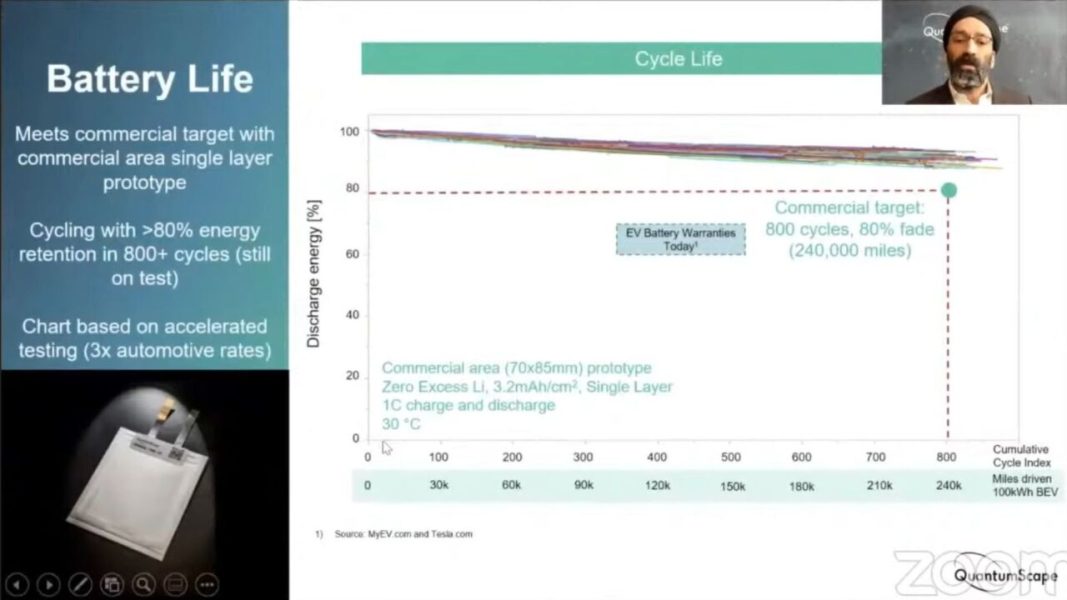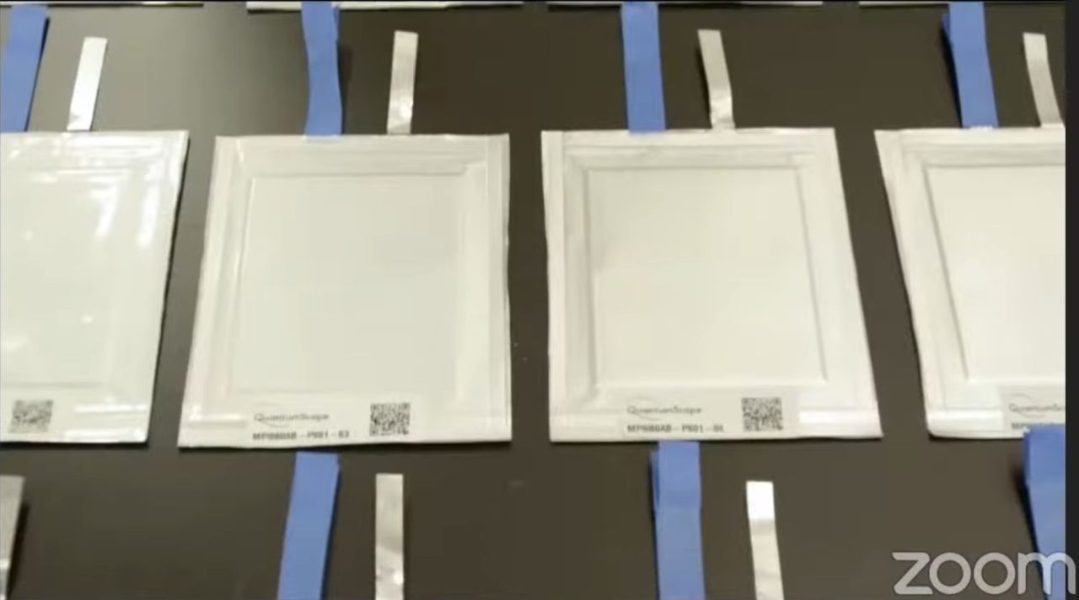
QuantumScape provided solid state data. Charge 4 C, withstand 25 C, 0-> 80%. in 15 minutes
Content
QuantumScape, a startup to develop solid electrolyte cells, boasted about the parameters of its cells. Their capabilities are impressive: they allow charging at 4 ° C, withstand up to 25 ° C, offer energy densities in the range of 0,3-0,4 kWh / kg and around 1 kWh / l. JB Straubel, co-founder of Tesla, sees this as a breakthrough.
QuantumScape solid-state cells in Volkswagen vehicles after about 5 years?
Table of contents
- QuantumScape solid-state cells in Volkswagen vehicles after about 5 years?
- Charging at 4 C without derating
- Over 800 duty cycles with ~ 10% degradation
- After all, links to airplanes?
- Cons
QuantumScape has become famous twice in the past: once, when Volkswagen became the main shareholder of the company, and the second time, when JB Straubel, co-founder of Tesla, became a member of the board of directors. Now it has become loud for the third time: the company has released the results of its research. They are impressive for a number of reasons: a normal sized cell is shown that worked at normal temperature (30 degrees Celsius), and results are shown to be reproducible.

The QuantumScape Ceramic Cage is a flexible plate about the size of a playing card. In the upper right corner, you can see the president of the company, Jagdeep Singh (c) QuantumScape.
What are we talking about? QuantumScape cells are lithium cells that use a solid electrolyte instead of a liquid electrolyte, without a separate anode. Their anode consists of lithium ions during charging (Li-metal). When the cell is discharged, lithium ions go to the cathode, the anode ceases to exist.

Structural diagram of a modern lithium-ion cell (left) and a QuantumScape cell. In the classic cell coming from the top, we have an electrode, a graphite / silicon anode, a porous membrane, a lithium source cathode, and an electrode. All of this is immersed in an electrolyte that facilitates the flow (c) of the QuantumScape ions.
Charging at 4 C without derating
A key advance is the ability to charge QuantumScape cells up to 4 ° C without destroying them. There is no degradation, since the ceramic electrolyte allows the flow of lithium ions, but does not allow lithium dendrites to grow. 4 C means that with a 60 kWh battery we will reach a charging power of 240 kW, with 80 kWh already 320 kW, etc.. At the same time, we will charge up to 80 percent in 15 minutes, so the average charging power will not be much lower than the maximum - they will be 192 and 256 kW, respectively.
Such powers will turn into replenishment of the range at a speed of +1 200 km / h, i.e. +20 km / min... A fifteen-minute stop to stretch your bones and a toilet will give you around 300 kilometers or over 200 kilometers of freeway.
The possibility of significant "customization" of the cells is also interesting. The company boasted tests up to 25 C. Assuming we will be using "only" 20 C, a car with a 60 kWh battery can withstand 1,2 MW shots!
Over 800 duty cycles with ~ 10% degradation
Another great advantage of QuantumScape cells is their high cycling. They easily reach the estimated 800 cycles (work = full charge and discharge) at 1°C and promise even more durability at lower power - and the latter can be found in electric vehicles.

It may seem that 800 duty cycles is not much, but if we put this value on the machine, we get big numbers. Let's say we have QuantumScape cells assembled into a 60 kWh battery. This capacity allows you to easily drive more than 300 kilometers. 800 cycles of work is a mileage of at least 240 thousand kilometers (diagram above).
With such a mileage, the elements still retain about 90 percent of their capacity, so they allow you to drive no more than 300 kilometers, but just 300 kilometers without recharging! If linear degradation continues, which we do not yet know about, at 480 80 kilometers we will reach about XNUMX percent of power and so on.
We add that today the signal for replacing or repairing a battery is a capacity of approximately 65-70 percent of the original capacity.
After all, links to airplanes?
JB Straubel, Tesla's co-founder and now a member of the QuantumScape board of directors, sees the company's achievement as a breakthrough.... He stresses that such sudden power surges are not very common, and Tesla has measured progress in single-digit percentages in recent years. Presentations from other startups usually focused on selected parameters and omitted others, while QuantumScape showed a number of measurements regarding both durability and load and endurance.
In his opinion, the new elements could allow the creation of electric aircraft with the ranges familiar to us.
Cons
None of the images show charged QuantumScape cells. Judging by the animation, they are very swollen. The difference appears to be at least 2-3 times greater than in the case of lithium-ion cells with graphite-based anodes, which can be a limitation when creating high-capacity batteries.
Worth seeing (almost 1,5 hours of material):
Opening photo: QuantumScape (c) Appearance of QuantumScape cells

This may interest you:
